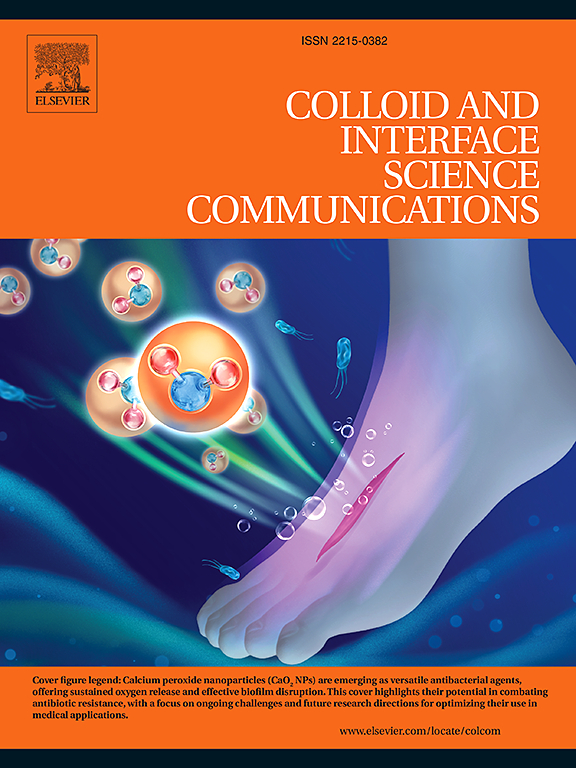超高分子量聚乙烯缝合线用儿茶酚基抗菌涂层的一锅合成
IF 4.7
3区 材料科学
Q2 CHEMISTRY, PHYSICAL
引用次数: 0
摘要
超高分子量聚乙烯(UHMWPE)是一种很有前途的用于骨修复的高强度缝合线材料,但由于其表面惰性,限制了其在生物医学上的应用。采用一锅法将儿茶酚(CA)/妥布霉素(Tob)/聚甲基丙烯酸磺基甜菜碱(pSBMA)复合涂层涂在缝合线表面。在Tob和CA之间的氧化还原反应中,产生羟基自由基,引发SBMA的聚合。所得到的涂层不仅降低了表面粗糙度,而且在使用过程中保持纤维足够的机械强度以承受组织张力。缝合线具有良好的杀菌和抗菌粘附性能,可有效防止细菌靠近和粘附,从而降低手术部位的感染率。此外,缝合线具有良好的生物相容性和血液相容性。综上所述,改性超高分子量聚乙烯纤维在骨科组织修复中具有重要的应用潜力。此外,这种简便的制备多功能涂层的方法可能为生物医用材料的发展提供新的动力。本文章由计算机程序翻译,如有差异,请以英文原文为准。

One-pot synthesis of catechol-based antibacterial coating for ultra-high molecular weight polyethylene sutures
Ultra-high molecular weight polyethylene (UHMWPE), a promising material for high-strength sutures in bone repair, faces challenges due to its inert surface, limiting its biomedical applications. A one-pot approach was developed to apply a catechol (CA)/tobramycin (Tob)/poly(sulfobetaine methacrylate) (pSBMA) composite coating onto suture surfaces. During the redox reaction between Tob and CA, hydroxyl radicals were generated, initiating the polymerization of SBMA.The resulting coating not only reduces the surface roughness but also maintains sufficient mechanical strength of the fibers to withstand tissue tension during usage. Furthermore, the sutures exhibited good bactericidal and anti-bacteria adhesion properties, effectively preventing bacterial approaching and adhering, thereby reducing the infection rate at the surgical site. Additionally, the sutures demonstrated excellent biocompatibility and hemocompatibility. In conclusion, the modified UHMWPE fibers hold significant potential for application in orthopedic tissue repair. Moreover, this facile method for fabricating multifunctional coatings may provide new impetus for the development of biomedical materials.
求助全文
通过发布文献求助,成功后即可免费获取论文全文。
去求助
来源期刊

Colloid and Interface Science Communications
Materials Science-Materials Chemistry
CiteScore
9.40
自引率
6.70%
发文量
125
审稿时长
43 days
期刊介绍:
Colloid and Interface Science Communications provides a forum for the highest visibility and rapid publication of short initial reports on new fundamental concepts, research findings, and topical applications at the forefront of the increasingly interdisciplinary area of colloid and interface science.
 求助内容:
求助内容: 应助结果提醒方式:
应助结果提醒方式:


